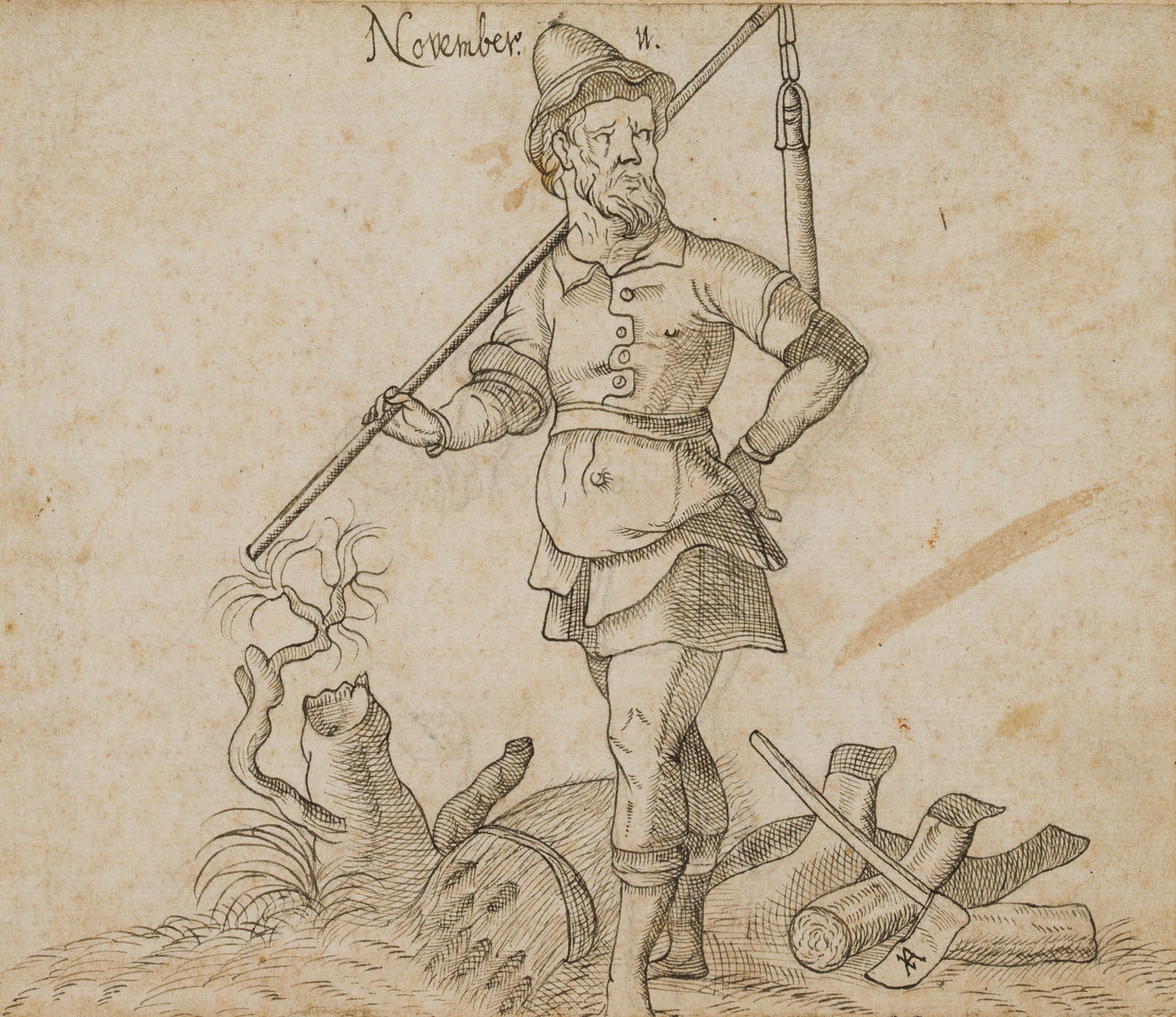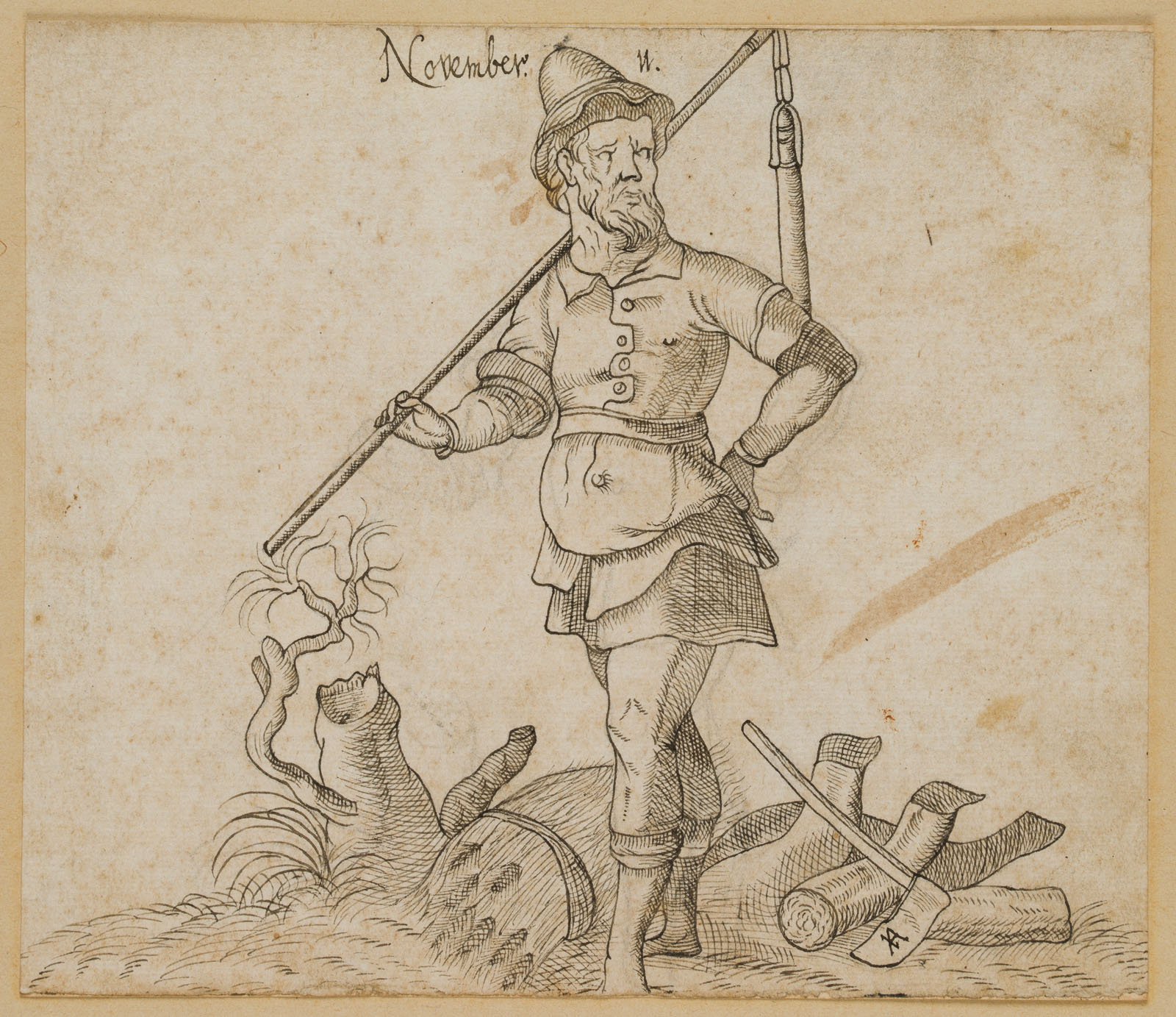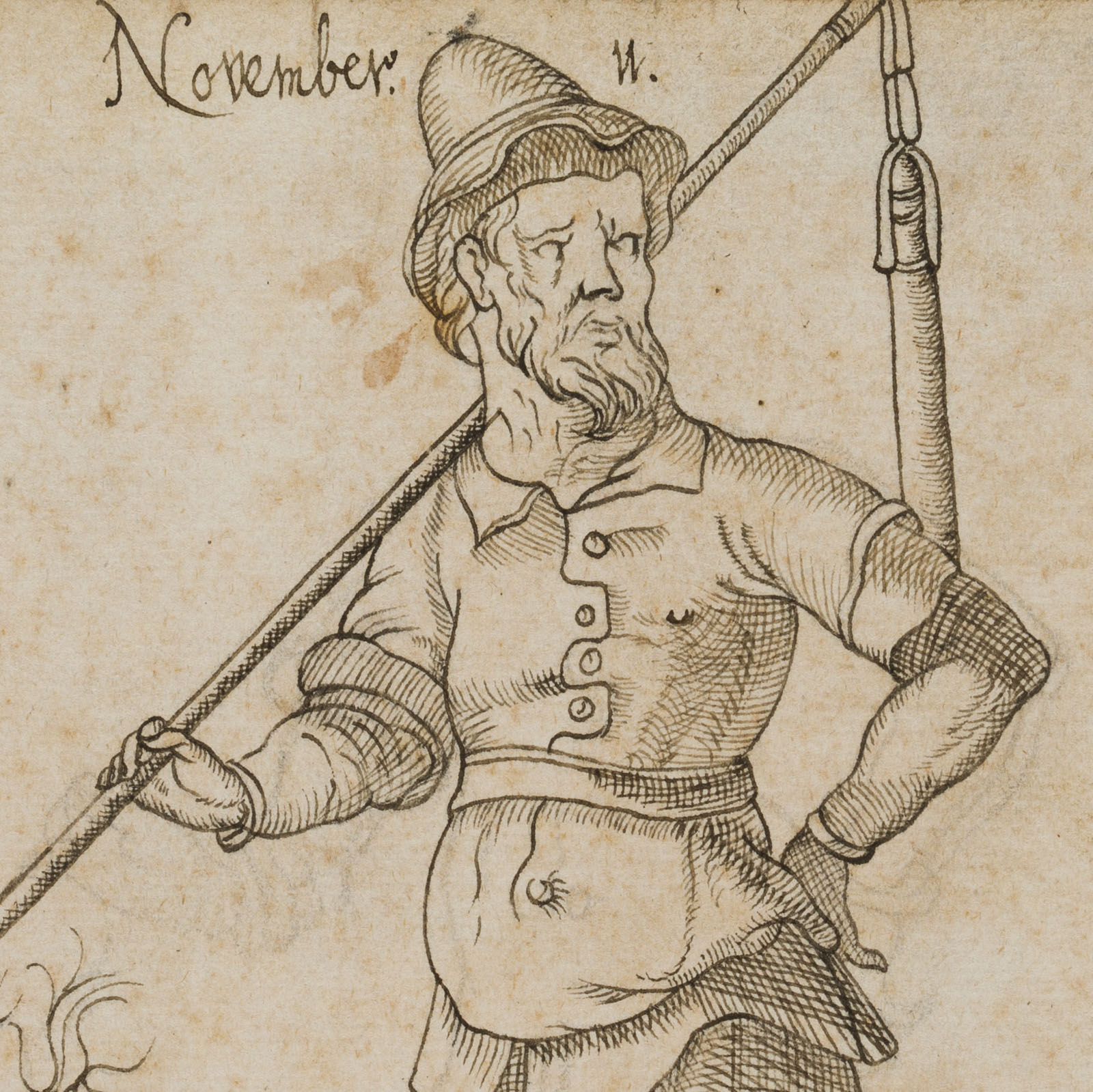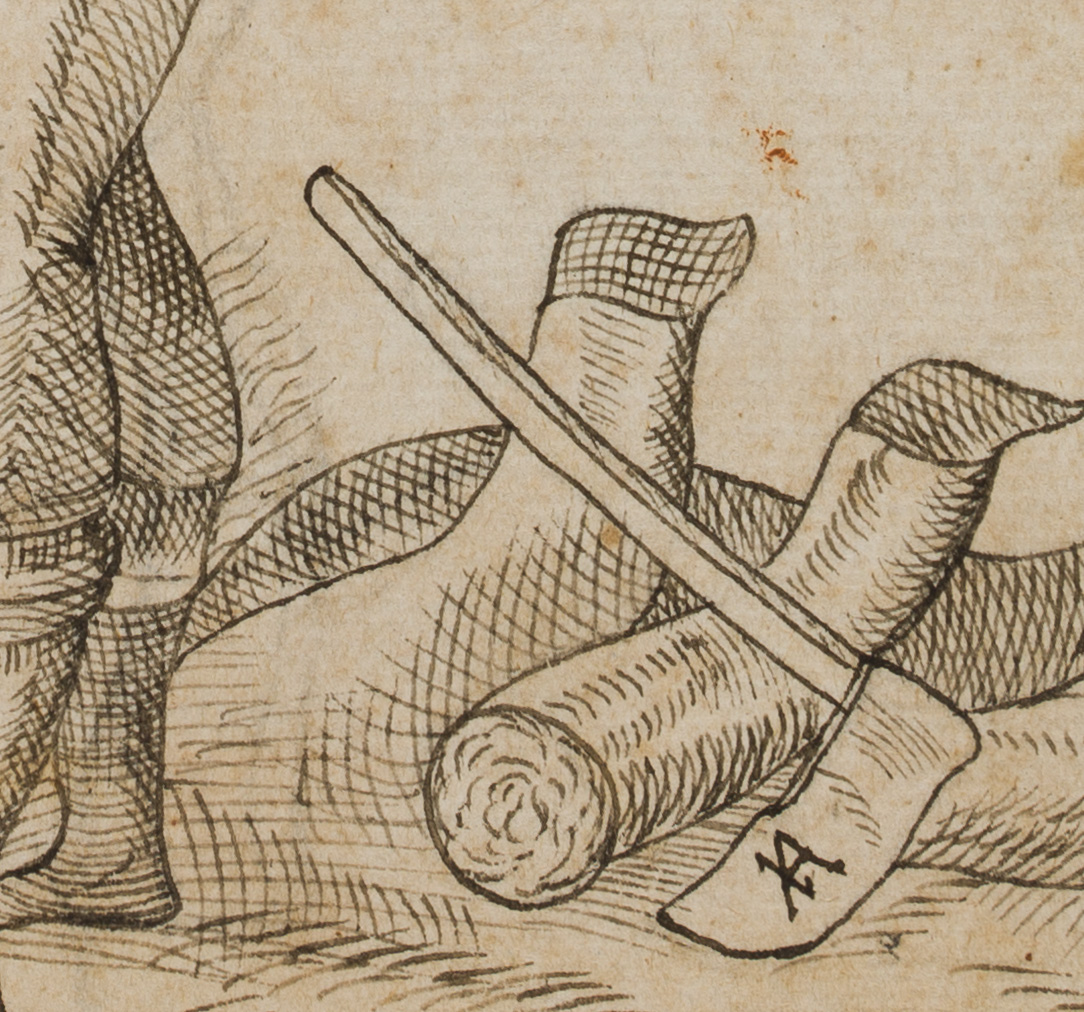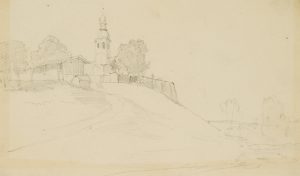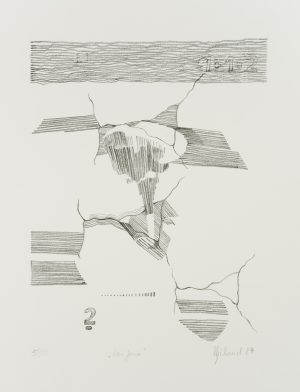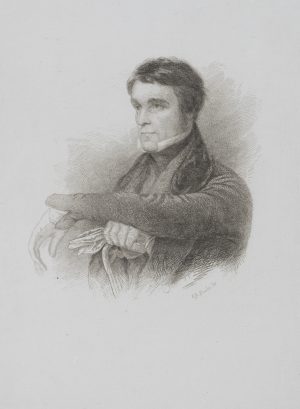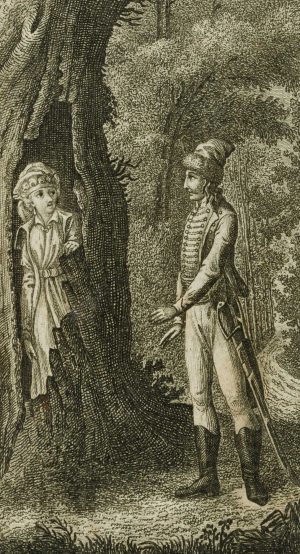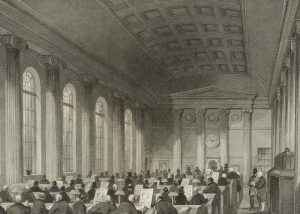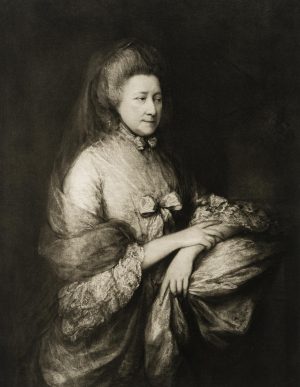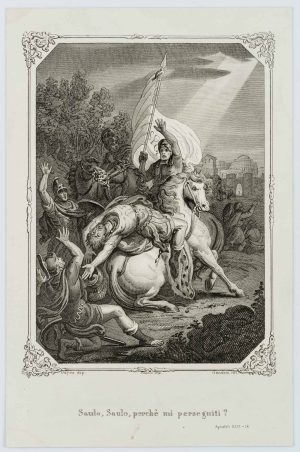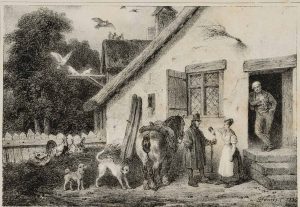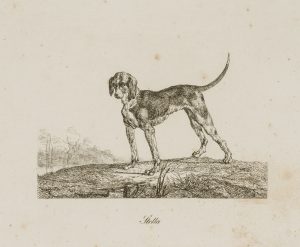Nach Jost Amman (1539 Zürich – 1591 Nürnberg), Aus einer Folge von Zeichnungen nach Jost Ammans, Folge der 12 Monate aus dem Jahr 1588, “Der November”, um 1700, Federzeichnung
- Technik: Federzeichnung auf Büttenpapier, aufgezogen auf Papier
- Bezeichnung: Oben mittig in der Zeichnung betitelt: “November 11”. Auf dem Beil rechts unten mit Monogramm “JA”. Gelungene Zeichnung nach Jost Amman, die sich vor allem im Ausdruck des Gesichts von der Vorlage löst und dadurch eine neue Qualität gewinnt. Der gebürtige Schweizer kam 1561 nach Nürnberg, um mit Virgil Solis zusammenzuarbeiten. Er gab zahlreiche Bücher mit Holzschnitten heraus und schuf Illustrationen zur Bibel, zu Ausgaben antiker und zeitgenössischer Autoren und zu Sachbüchern verschiedenster Bereiche, unter anderem zu religiösen und historischen Themen, zu juristischen Themen wie dem Jagd- und Forstrecht, zum Ackerbau und zur Jagdkunst. Seine Holzschnitte zeichnen sich durch die elegante, etwas manierierte Schlankheit der Figuren aus, wie sie auch der Künstler vorliegender Zeichnung widerzugeben weiß.
Aus dem Nachlass des Antiquars Rosenthal München / Amsterdam. - Datierung: um 1700
- Beschreibung: Sehr reizvolle Darstellung eines Bauern mit Dreschflegel zum Dreschen des Getreides nach der Ernte, welche in Form einer Garbe zu seinen Füßen lagert.
- Schlagworte: Natur, Genre, Schweiz, Figürlich, 1700-1749
- Größe: 15,8 cm x 18,3 cm
- Zustand: Die Darstellung macht einen sehr guten Eindruck. Das Blatt hat sich altersbedingt verfärbt und ist stockfleckig, rechts neben dem Dargestellten ist ein streifenförmiger Fleck festzustellen.
English Version:
After Jost Amman (1539 Zurich – 1591 Nuremberg), From a series of drawings after Jost Amman’s, series of the 12 months from the year 1588, “November”, c. 1700, Pen drawing
- Technique: Pen drawing on , mounted on Paper
- Inscription: Titled at the top centre of the drawing: “November 11”. On the hatchet with the monogram “JA” lower right. Successful drawing after Jost Amman, which breaks away from the original especially in the expression of the face and thus gains a new quality. The Swiss-born artist came to Nuremberg in 1561 to work together with Virgil Solis. He published numerous books with woodcuts and created illustrations for the Bible, for editions of ancient and contemporary authors and for non-fiction books in a wide variety of fields, including religious and historical subjects, legal topics such as hunting and forestry law, agriculture and the art of hunting. His woodcuts are characterised by the elegant, somewhat mannered slenderness of the figures, as the artist of the present drawing also knows how to reflect.
From the estate of the antiquarian bookseller Rosenthal Munich / Amsterdam. - Date: c. 1700
- Description: Very charming depiction of a farmer with a flail for threshing the grain after the harvest, which is stored in the form of a sheaf at his feet.
- Keywords: 18th century, Figurative, Nature, Switzerland,
- Size: 15,8 cm x 18,3 cm (6,2 x 7,2 in)
- Condition: The depiction makes a very good impression. The sheet has discoloured due to its age and is foxed, to the right of the sitter there is a striped stain.

